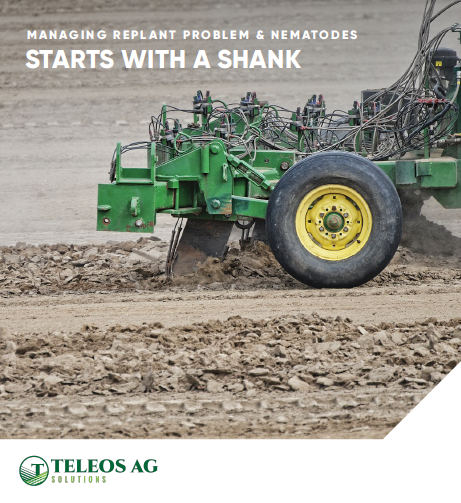Forty years from now, the Earth will be home to 9 billion people, including more than 400 million in the U.S., researchers say. Growers will need to produce twice as much food as they do today, with approximately 30% less land. The need to increase efficiency and productivity while preserving natural resources, especially water and soil, is great.
In light of these realities, growers are under pressure to produce more, pollute less, fulfill consumer preferences, and make a living. To help achieve a sustainable agriculture system that looks beyond the end goal of providing more goods, four goals that should be considered simultaneously have been identified and published in a 500-page report available from the National Research Council (visit www.nap.edu to obtain a copy). These goals are: satisfy human food, fiber, and feed requirements and contribute to biofuels needs; enhance environmental quality and the resource base; maintain the economic viability of agriculture; and improve the quality of life for farmers, farm workers, and society as a whole.
Labor, Automation Needs
Kornegay says labor issues, the need to automate crop systems, and rising fuel prices are examples of areas that need to become more sustainable. “When gas shot up to $147 a barrel in 2007 and 2008 and fertilizer prices skyrocketed, it was a real wake-up call,” she says. “Plus, corn and beans were being diverted to biofuel, so animal feed became more expensive. This was followed by the economic collapse, so it gave us a preview of things to come. Beyond fuel prices, a major drought in Australia and Argentina caused a wheat shortage across the globe, and a shortage of corn due to conversion to biofuels caused riots worldwide. This year, major heat and fires in Russia, flooding in the Middle East, and drought in China show us that we need to use our resources differently.”
According to James C. Borel, DuPont executive vice president, drought is one of the most damaging environmental factors in reducing agricultural productivity, and in 2009 alone, drought cost farmers $14 billion worldwide.
Each year, 85% of the U.S. corn crop is affected by drought stress at some time during the growing season, and just four days of drought stress during the peak of summer can cut yields in half. “Drought tolerance technologies are part of the next great wave of agricultural innovation that will improve agronomic characteristics of plants so they more efficiently use available resources,” Borel says.
As we move toward a world population of 9 billion, how will the world’s farmers feed everyone, facing all the constraints we have now? In addition to implementing the necessary changes to existing farm systems, the urban agriculture trend will play a significant role in addressing food needs, Kornegay says. “We have to use our resources better and urban areas are becoming more important, like the victory gardens we used to plant,” she says. “Fruits and vegetables are becoming the number one area of gardening, and I think that will last. People need to get more involved in their food, especially since we’re going to need more in the future.”
Pistachio Growers on High Alert for Botryosphaeria Disease
1
1
5
Proper Use Of Resources To Remain Sustainable
Laura Drotleff is Editor of Greenhouse Grower. See all author stories here.










